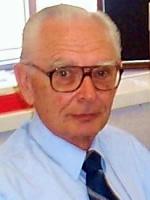Challenging the Postulates of Requisite Organization Theory
Speaker A I'll tell you one thing that emerged as needing to be looked at. Elliot's notion was that there was discrete step level to level, so that it's like ice to water to steam, a change of state, ...
Transcript of the presentation video
NOTE: This transcript of the video was created by AI to enable Google's crawlers to search the video content. It may be expected to be only 96% accurate.
Speaker A I'll tell you one thing that emerged as needing to be looked at. Elliot's notion was that there was discrete step level to level, so that it's like ice to water to steam, a change of state, to be frank, that flies in the face of everything that we know about human capability. It flies in the face of the cognitive literature. And without doing Elliot a disservice, you'll recall from and now I can't tell you which book it was from, one of his books even has a diagram showing multimodal distributions down the levels. Well, that, again, a multimodal distribution of human capability is something that is beyond anything that we've seen. Most of the things that we see are unimodal. They may be skewed, but they normally have one mode. And for most things, the mode is somewhere near the middle. So how can this be? When we did our CPA research and then later with the phrases alone estimating CPA outcomes, what we found was that well, what we did is, like for level three, we scored for level three c, which is low, three b, which is in the middle, and three a, which is at the top. Okay? Now, according to Elliot's multimodal theory, that should have looked like that. Three b should have been the mode. Four b should have been the mode. What we found, in fact, was a single curve roughly approximating a normal curve. So that if I look at four, for example, four c is the mode. If I look at three, three a is the mode, because that's where the mode of the broad curve is. Every distribution of CPA results I've ever seen looks like that. Every distribution of MCPA results I've seen looks like that. So, okay, how do you reconcile this with ice to water to steam? And the point is, you can't. What you're looking at with what the CPA measures is probably some unitary underlying dimension that appears to be unimodal. And so that's one of the things that we found we ought to look for. And we did look for it, and that's what we found. And in fact, if you go look then at Elliot's salary progressions, what you find is the same thing. And he assumed because there were different levels, that they would be multimodal. I think, and I'd be very cautious about attributing that logic to them, but he did think they were multimodal. We discussed this a number of times, and they aren't. So that was an example of what we learned. And we learned that by having good scholars really challenged the theory. But by and large, most of the postulates that Elliot really strongly advanced probably were supported.
Major organizations and consulting firms that provide Requisite Organization-based services





